
Izak Meyer’s Wiegelied is an endearing Jewish lullaby sung by an orange seller to his newborn son hoping he will do better in life than himself. The cover illustration by Hardy might suggest that the song is a racist Jewish stereotype. However, it was composed by James Cohen van Elburg and published by Philip Hakkert1. Both were Jewish and with the song’s comical-sounding Yiddish words they were probably mocking themselves. We still can enjoy it, sung by Max Tailleur in his typical thick Yiddish accent.
In 1880 Philip Hakkert (1859-1925), an avid amateur musician and conductor, founded a music business in Rotterdam. Initially his shop sold musical instruments and sheet music, later phonographs, music automata and records too. In 1914 Hakkert also began the production of catgut, a strong cord made of the intestines of animals, especially sheep. It was used for string instruments, tennis racquets, and surgical material.
https://www.facebook.com/albert.rottier/videos/o.285833168138131/10200725546635708/?type=2&theater
Around 1916 Philip Hakkert started to publish his own sheet music. Some in our collection are ingeniously illustrated by a young illustrator and poster designer, Carel (‘Carlo’) Jung from Rotterdam.

Philip Hakkert’s two sons, Jacques Wolfgang (born in 1891) and Mozes (Max) Richard (born in 1894) helped in the business. Their second names reflect the musical interests of their father: Wolfgang Amadeus Mozart and, ironically, Richard Wagner.
Jacques specialised in making violins and cello’s.
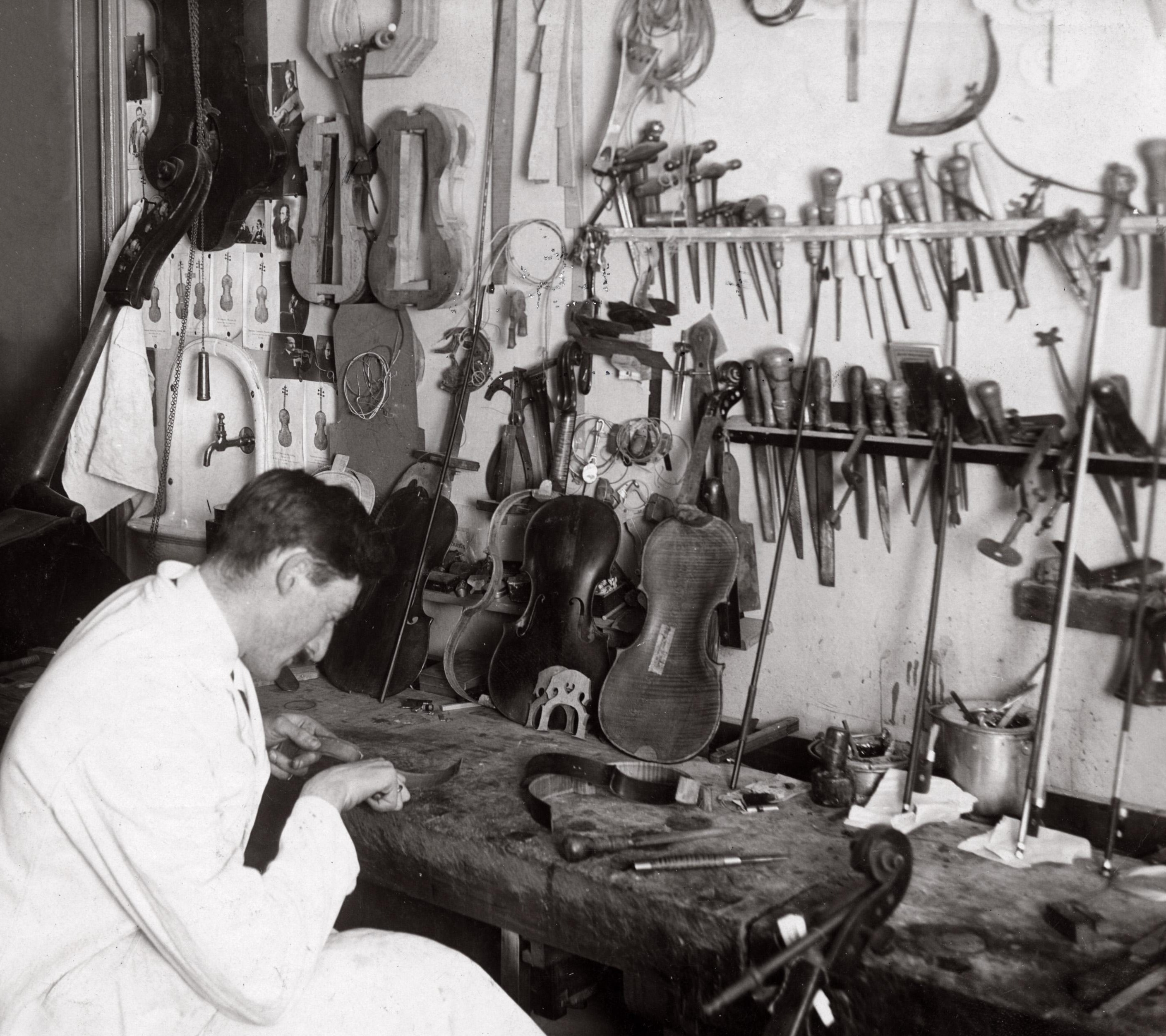
His brother Max on the other hand, played among others a prominent role in the pre-war cabaret and jazz scene. He liked to go dancing in the Pschorr, an enormous dance hall with a sensationally illuminated glass dance floor, an impressive glass ceiling, and gigs by famous orchestra’s. Pschorr was the place to be (…seen) in Rotterdam.
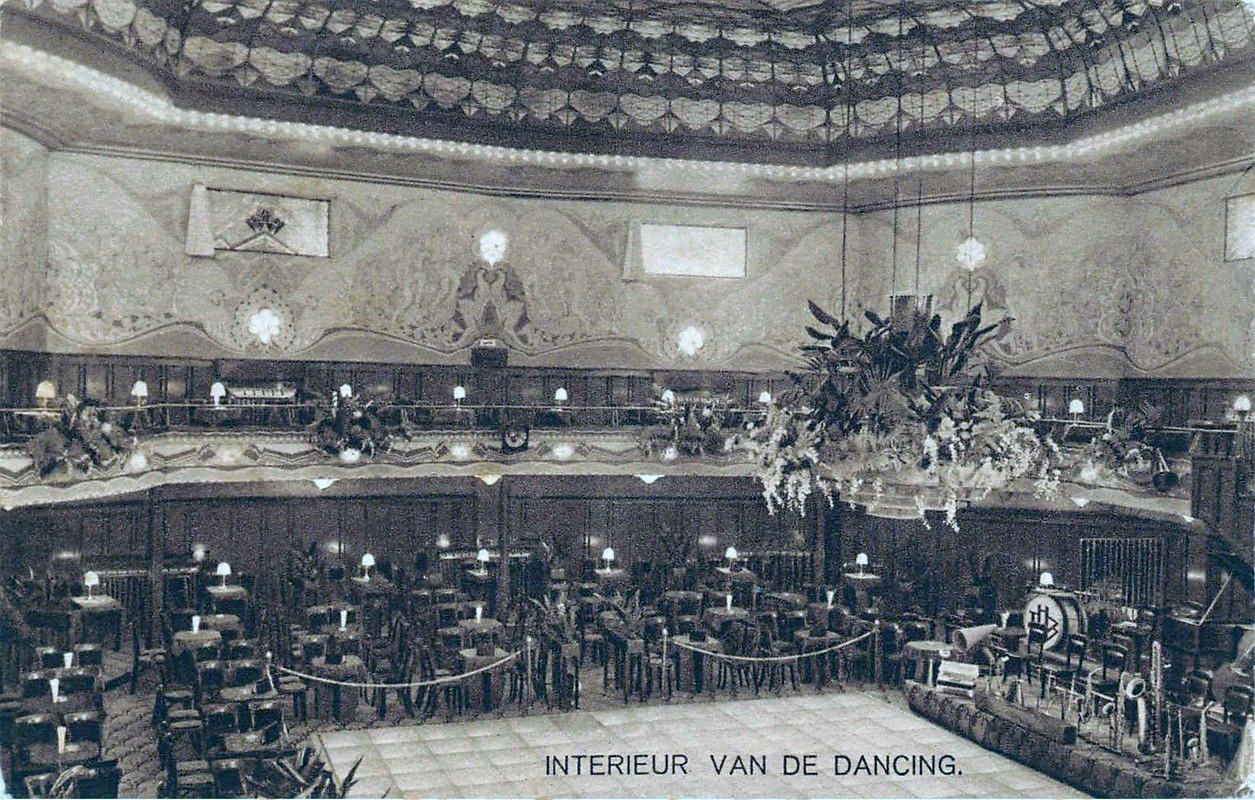
There Max Hakkert could make contacts and prepare deals with showbiz people and musicians, including Coleman Hawkins and Louis Armstrong for whom he arranged concerts in The Netherlands.
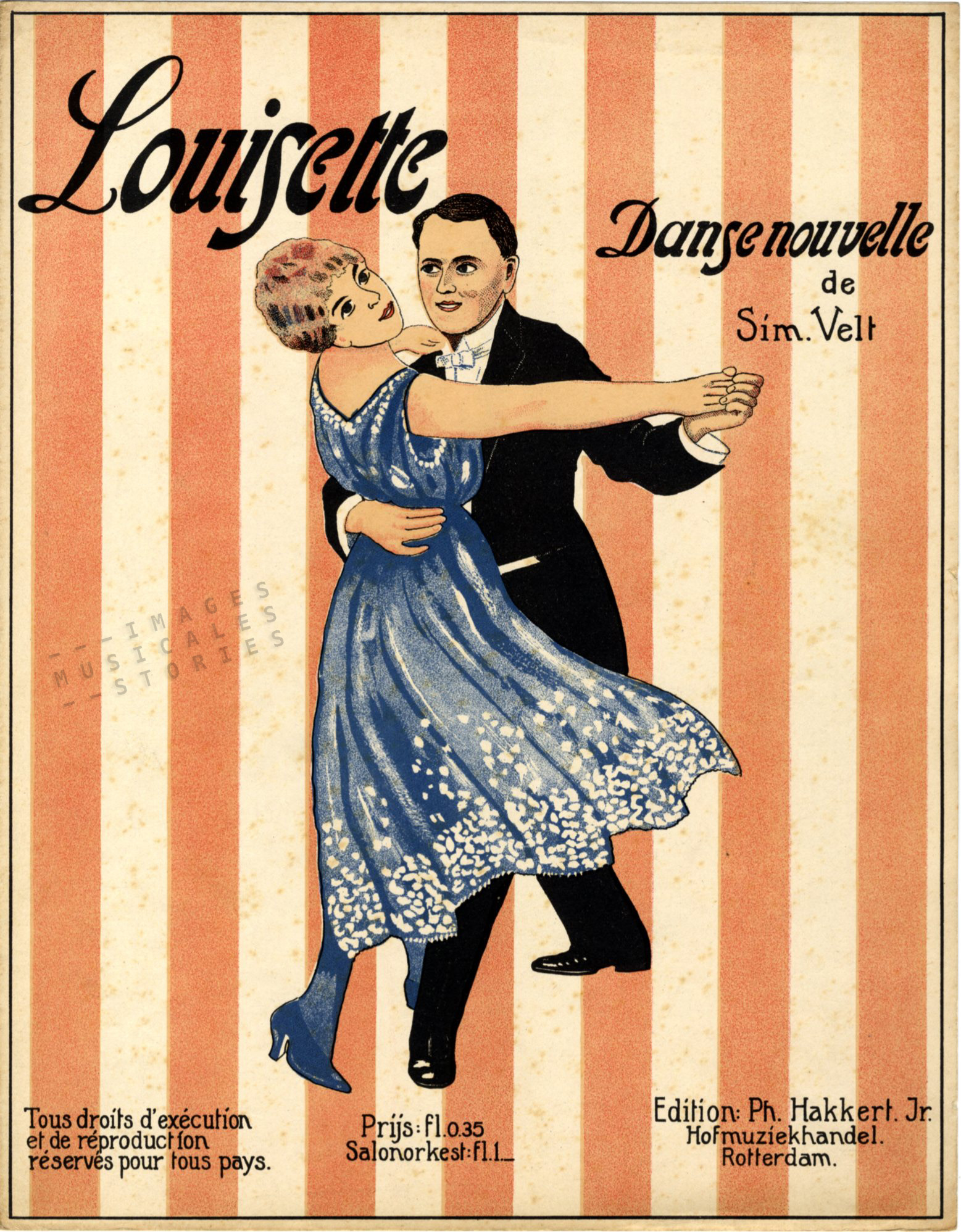
After Philip’s death in 1925, Jacques continued the violin workplace and the catgut manufacture while Max took on the music shop and the wind instruments workplace.

Max had married Flora Sanders, a piano teacher in 1916. They had met in his shop which Flora regularly visited to buy sheet music. Together they got two children, Anna (Ans) was born in 1918 and Philip (Flip) in 1920. Max adored his family. He was a football fan and a keen supporter of Sparta Rotterdam, still an elite sports club at that time. He also enjoyed his business trips to London in a small Fokker aeroplane. Politically, Max Hakkert was rather secular, liberal and certainly broad-minded.
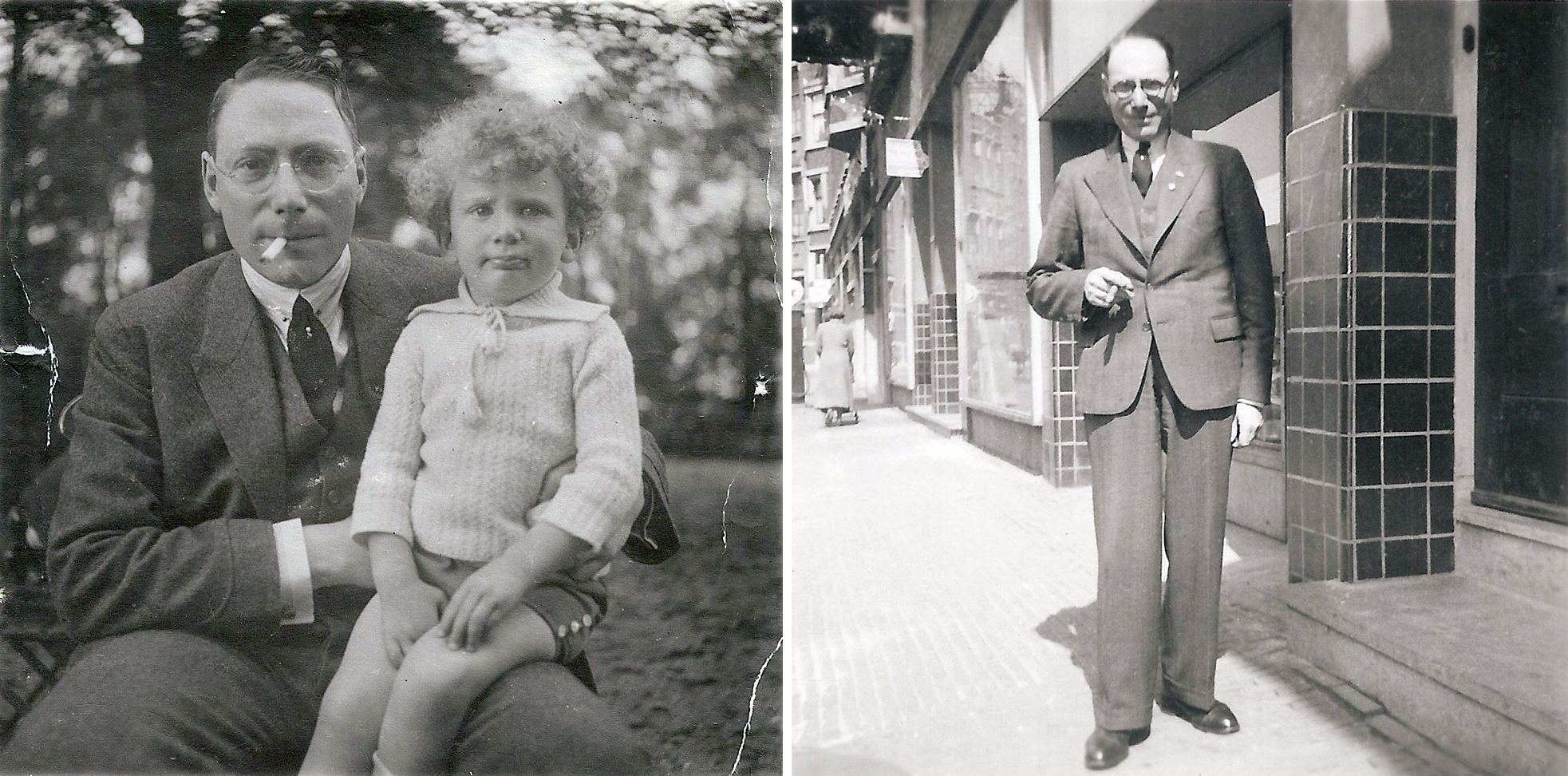
From 1940 until 1942 Max kept a diary which he rewrote during his exile in France. Through this moving journal we witness the difficult life in wartime Rotterdam, the city he thoroughly loved.
On the early morning of May 10th 1940, Max awoke to the sound of air planes roaring in the sky. Germany had attacked the Netherlands without a declaration of war. While he was busy securing his shop, a car from the blood centre came to fetch him so he could donate blood. He left, not knowing that it was the last time he had set foot in his shop.

In the evening Max and his family took refuge in a bank with a large bomb shelter in the basement. The father of the best friend of Flip (Max’s son), was concierge in that bank and he welcomed the family without a second thought. They stayed there during the four days of the Battle of Rotterdam. At some point the family even suggested a possible escape to England. Alas this did not work out. Max heard the ticking and crackling of the fierce battle to conquer the bridges across the river Maas. But the efforts of the Dutch Marines, nicknamed De Zwarte Duivels (The Black Devils), to regain control failed.
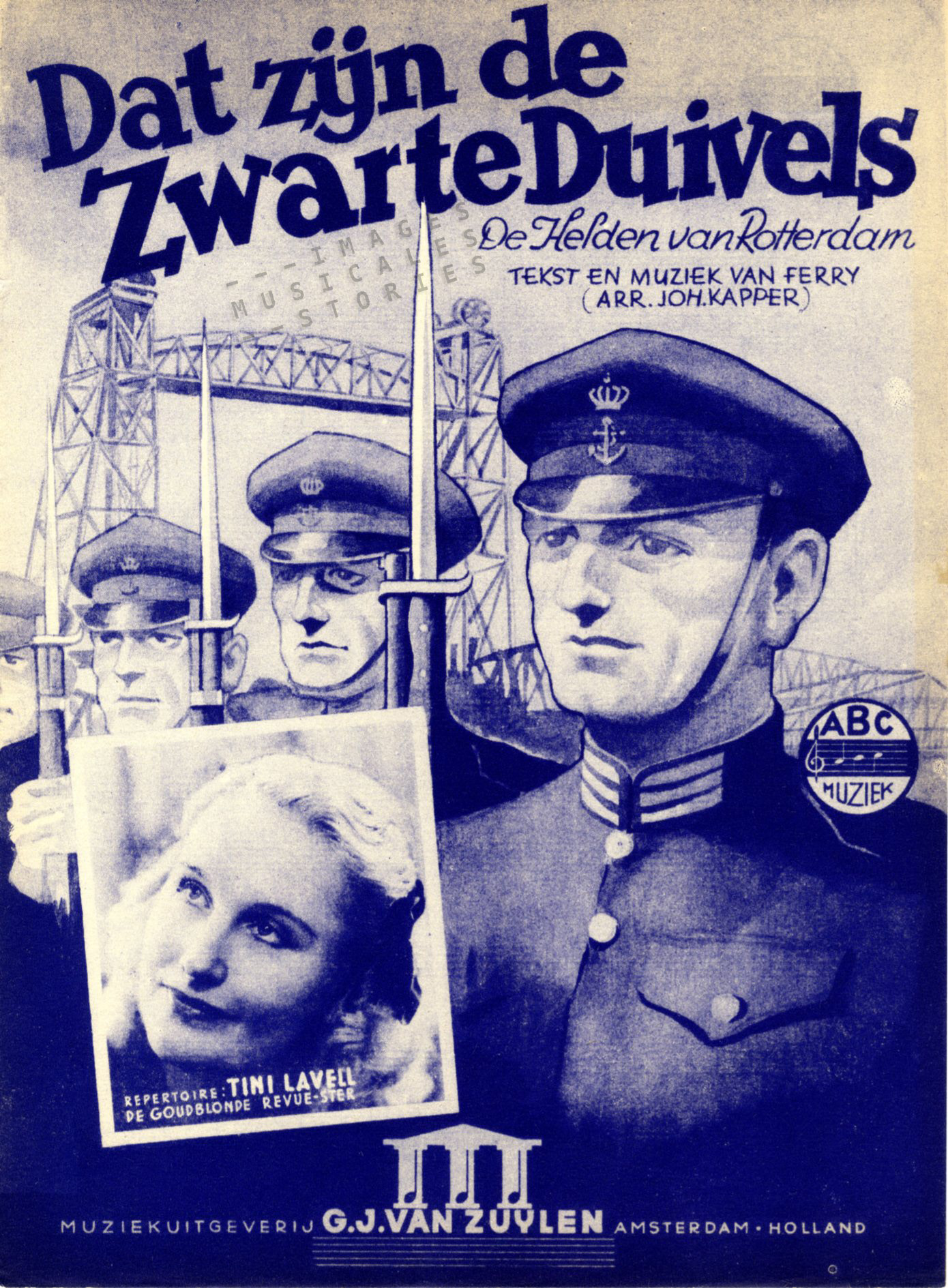
In the sunny afternoon of May 14th, heavy rumbling sounds filled the sky. Max anxiously listened to a sharp whistling followed by a heavy thump. This was repeated again and again. The people in the shelter were in agony. When Max left the shelter two hours later, he saw an apocalyptic cityscape. The entire historic centre of his home town was in flames or destroyed. The places where Max had spent his youth, the cosy streets, the warehouses where he used to smell exotic spices or coffee, the elegant patrician houses, were all gone. The air raid by the Luftwaffe killed hundreds of people and made 85.000 people homeless, including Max and his family whose apartment was destroyed. The music shop also burned down. Apart from some walls nothing was left of it. With great sorrow, Max saw the German soldiers enter Rotterdam. They did not seem tired at all, marching in an endless parade, appearing invincible.
Shocked by the Rotterdam Blitz, the Dutch forces capitulated the next day. That day Max and his family left Rotterdam to go living with his mother in Scheveningen. At once Max started to focus on the future. A few days after the bombing he already made plans, together with his staff and his daughter Ans, to rebuild the business in his brother Jacques’ unharmed premises. Although Max lost the largest part of his assets, he reopened his music shop after just six weeks. In August the family moved back to Rotterdam to a makeshift apartment behind the shop. Germans frequently visited his shop to cheer themselves up with music and singing.
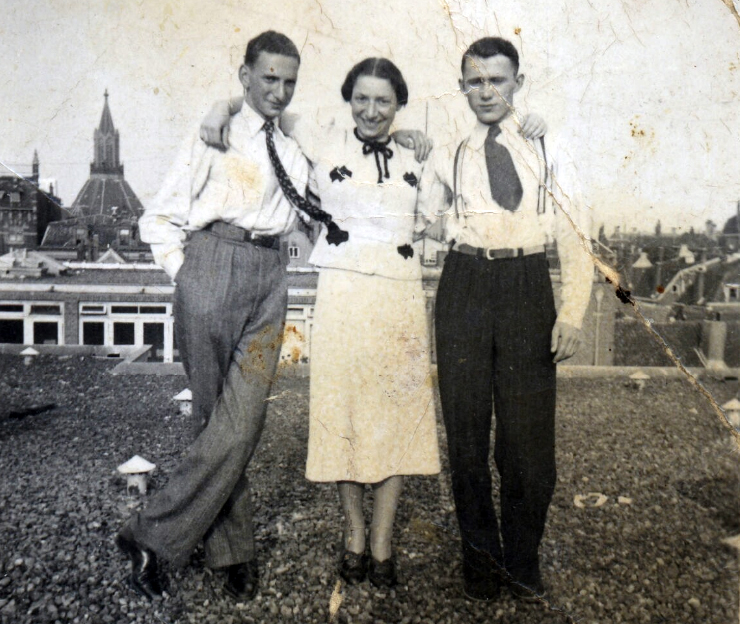
As Rotterdam kept being sporadically bombed (albeit now by the allies) the family decided to move again, this time to Voorburg, a village near Den Haag where they rented rooms above a hairdresser.
Remarkably, in his diary Max never wrote down the word Jew, instead he euphemistically referred to ‘a certain minority’. Also, he only mentioned occasionally and very covertly the anti-Jewish measures which became more and more grim. In October 1940 he had to register his business. In the summer of 1941 Jews were banned from public life. They were prohibited from entering hotels, restaurants, (movie) theatres, public libraries, museums, public swimming pools and parks. Their radios were confiscated. They were even forbidden from owning pigeons. Jewish children would have to attend their own separate schools. Max had to terminate his membership of the Sparta sports club.
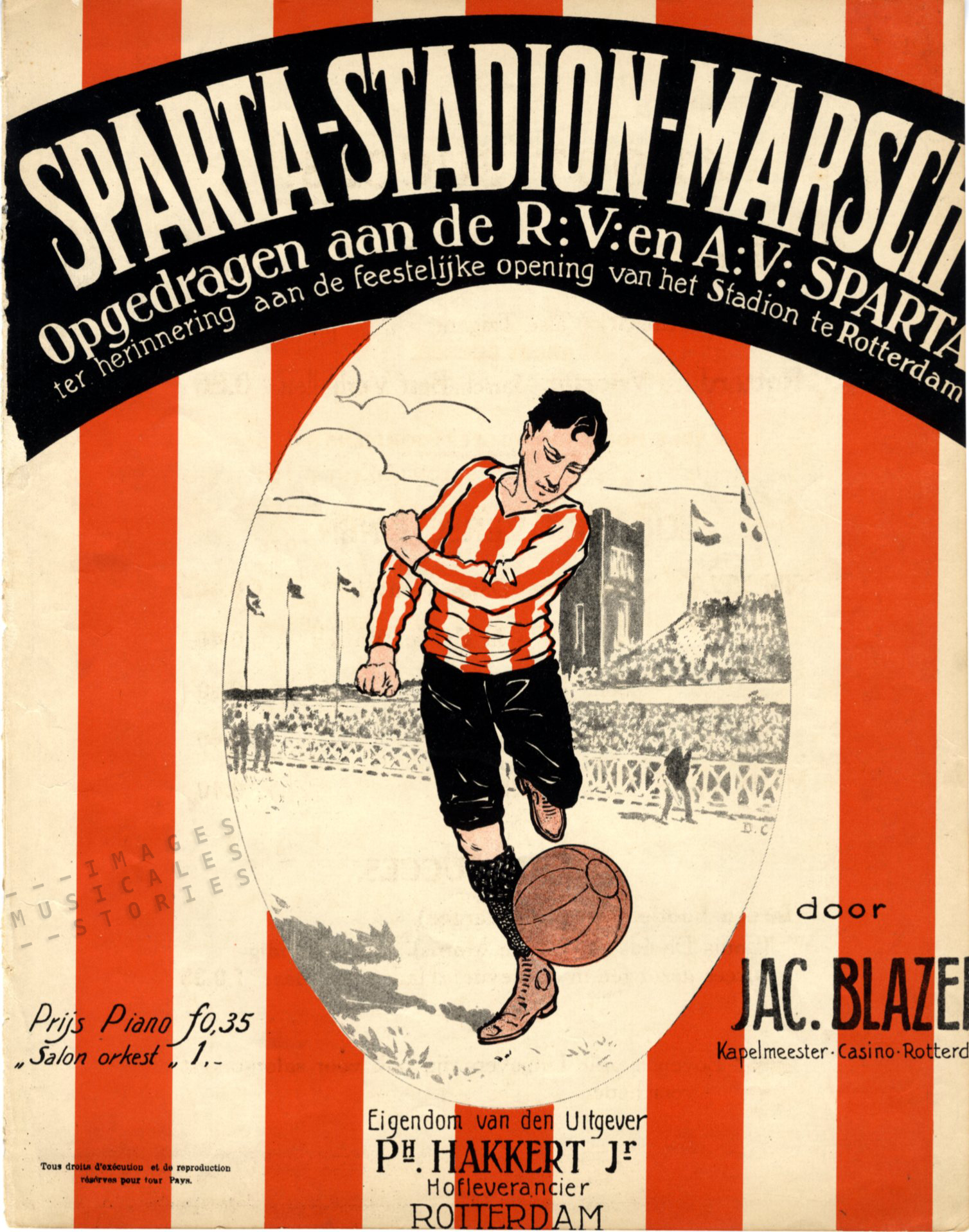
The aryanisation of Max’s business began. In December 1941 the authorities forced him to retire from it. Flip, who was needed as a repairman of wind instruments, could continue his work. Max still kept in contact with his business through the manager and his son. By March 1942 the business was forcefully placed under a German Verwalter (administrator) and Max had lost it for next to nothing… (see our story on Heinrich Strecker vs Franz Sobotka for a similar Nazi persecution of a Jewish music publisher).
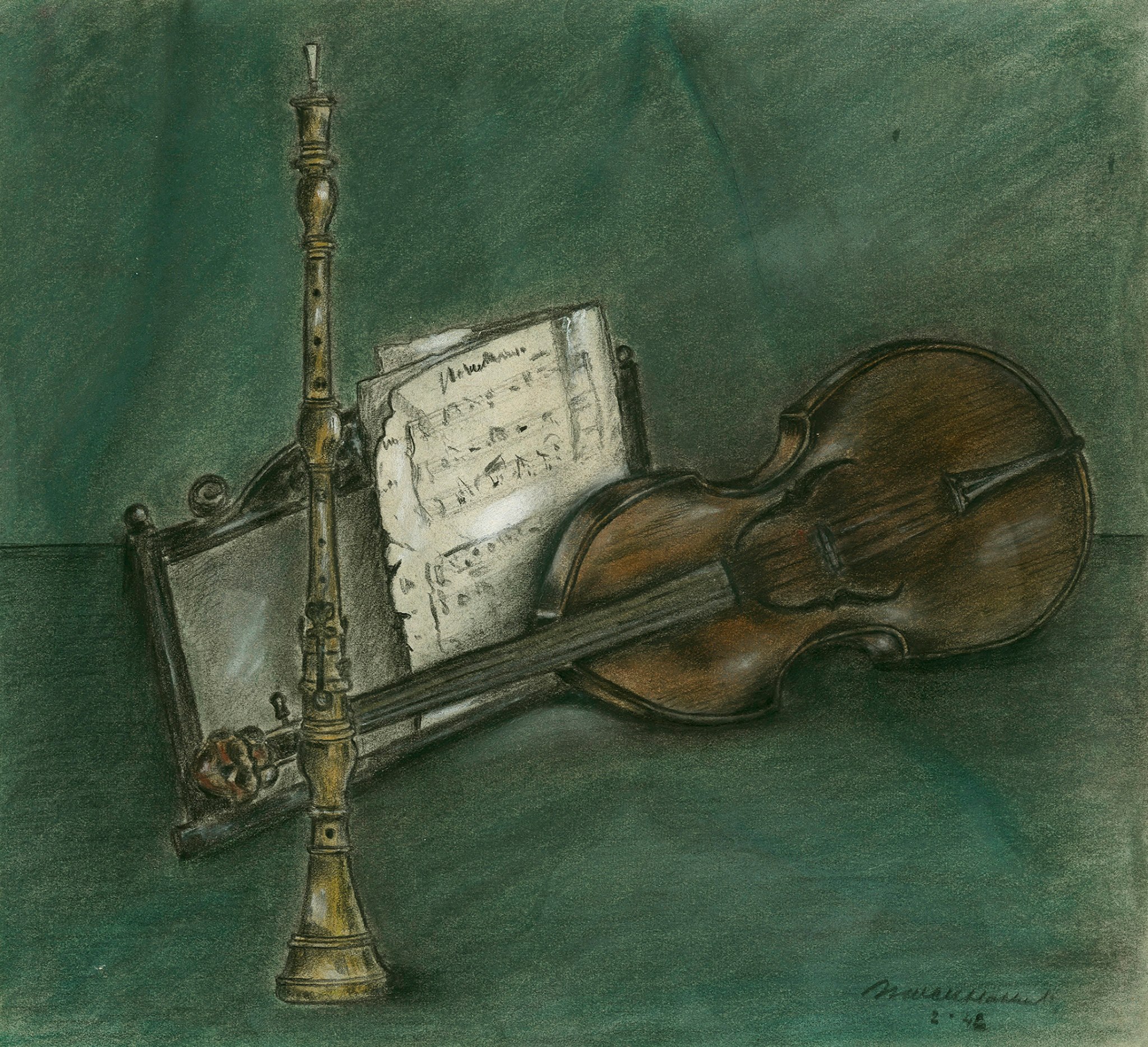
Max now passed his days in Voorburg by making long walks, playing his cello and drawing or painting. He had studied at an art school and in the early days had drawn at least one sheet-music cover himself.

Max’s son Flip and his intended future son in law, Dries Davids (or Broer as he liked to be called) continued working in the shop. Also being a Jew, Broer had lost his earlier job. The cheerful youngster lived with the family in Voorburg and Max loved him like a son. But as Jews were subjected to night curfew and to increasing travel restrictions, Flip and Broer had to stay in Rotterdam for their work from May 1942 on.
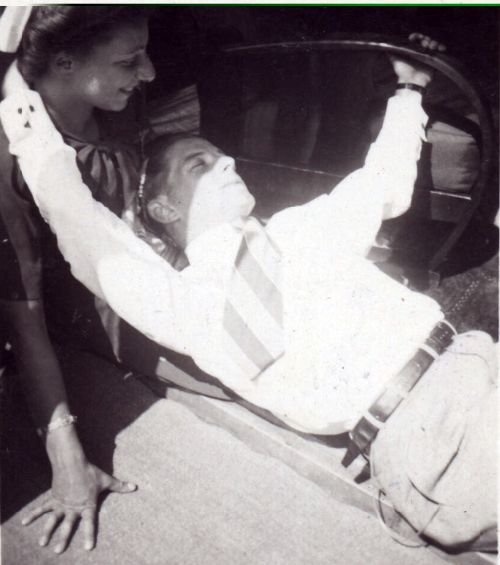
One of the last paragraphs in Max’s diary shows us a man who —in spite of the desperate turn of events— tries to make the best of a bad situation:
“Yet despite the turbulent and oppressive times, it was wonderful to walk outside, away from the crowds in God’s mellow nature. Then I practised some cello. After drinking coffee, I started reading or painting. And around six o’clock the boys came back. We had dinner and after Flip had played the flute and Broer the trumpet, we drank tea. How cosy we sat together. […]
I already said that the situation was oppressive, it became even more and more critical, but nonetheless we were happy. Did we ever realise this?”
Nonetheless, the family’s situation must have become untenable and with deportation looming, the family (Max, Flora, Flip, Ans and Broer) decided to flee the Nazi tyranny. In July 1942 the Salvation Army escorted the family to the Dutch border and with the help of passeurs (guides) the family clandestinely crossed the Dutch-Belgian and Belgian-French border. They even succeeded in sneaking over the demarcation line between the Zone occupée in the northern and western part of France and the Zone libre of the Vichy regime in the south.
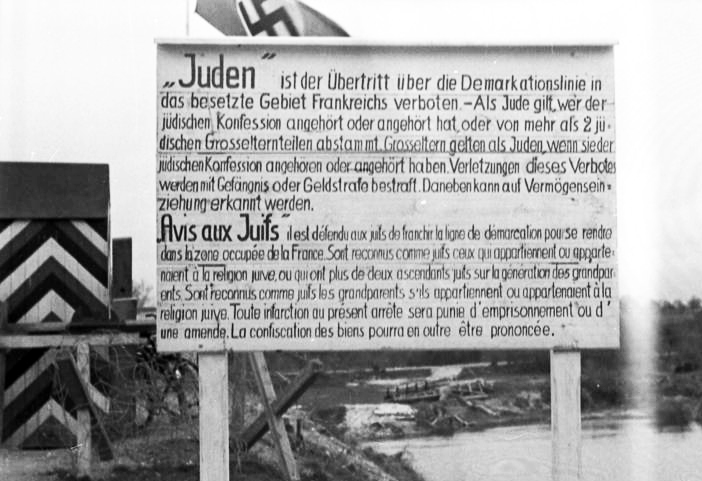
the family was stopped in Lons-le-Saunier, a city in the French Jura.3 They were transported to the Centre d’Hébergement de Rivesaltes in the Eastern Pyrenees, a deceiving name for an internment camp.
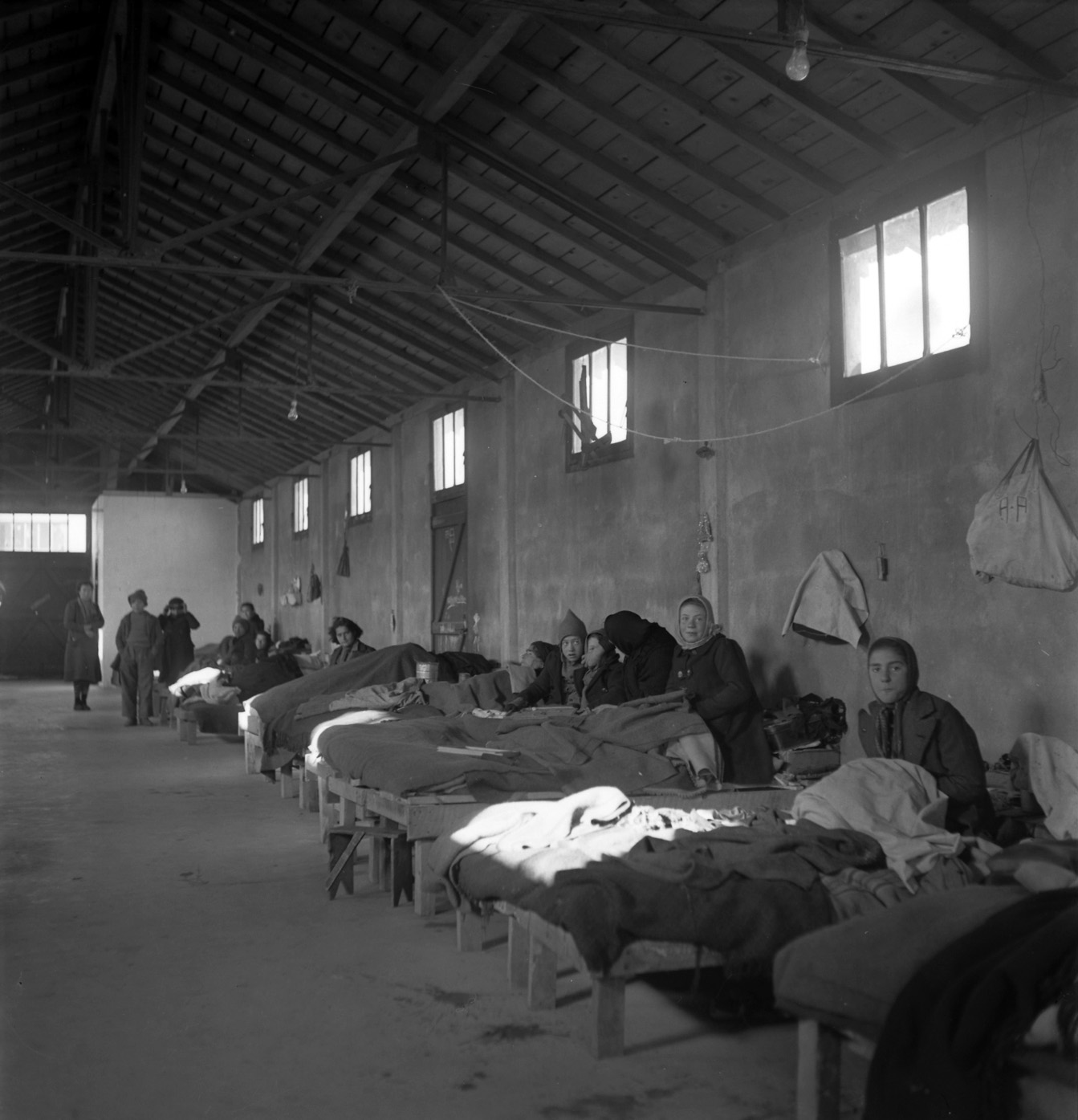
The camp was overcrowded, had poor housing and sanitation, and there was a shortage of food and medicine. At the end of November 1942, Flora and Ans were moved to the Camp de Gurs, in the western Pyrenees. This camp had an even worse reputation than Rivesaltes. According to one survivor: “If Auschwitz was hell, Gurs was purgatory.”

At the same time Max, Flip and Broer were officially released from Rivesaltes to be sent to to the Foreign Labour camp (Groupement de Travailleurs Etrangers, or ‘GTE’) of Châteauneuf-les-Bains. This idyllic village in the Puy-de-Dôme was a spa with a lot of empty hotels that were requisitioned to lodge refugees, mostly Dutch. A transfer to a GTE was for the internees like a lifebuoy. They were still under strict control, but they had more freedom than in Rivesaltes. At one point Flip got wounded at the leg and was sent to hospital in Clermont-Ferrand. He had to stay there for almost a month and complained about the very bad food, a daily regime of carrots, turnip and cabbage. Shortly before Christmas 1942, the family was reunited in Châteauneuf-les-Bains. There they succeeded to rent rooms from two aged ladies so that the five of them could stay together.
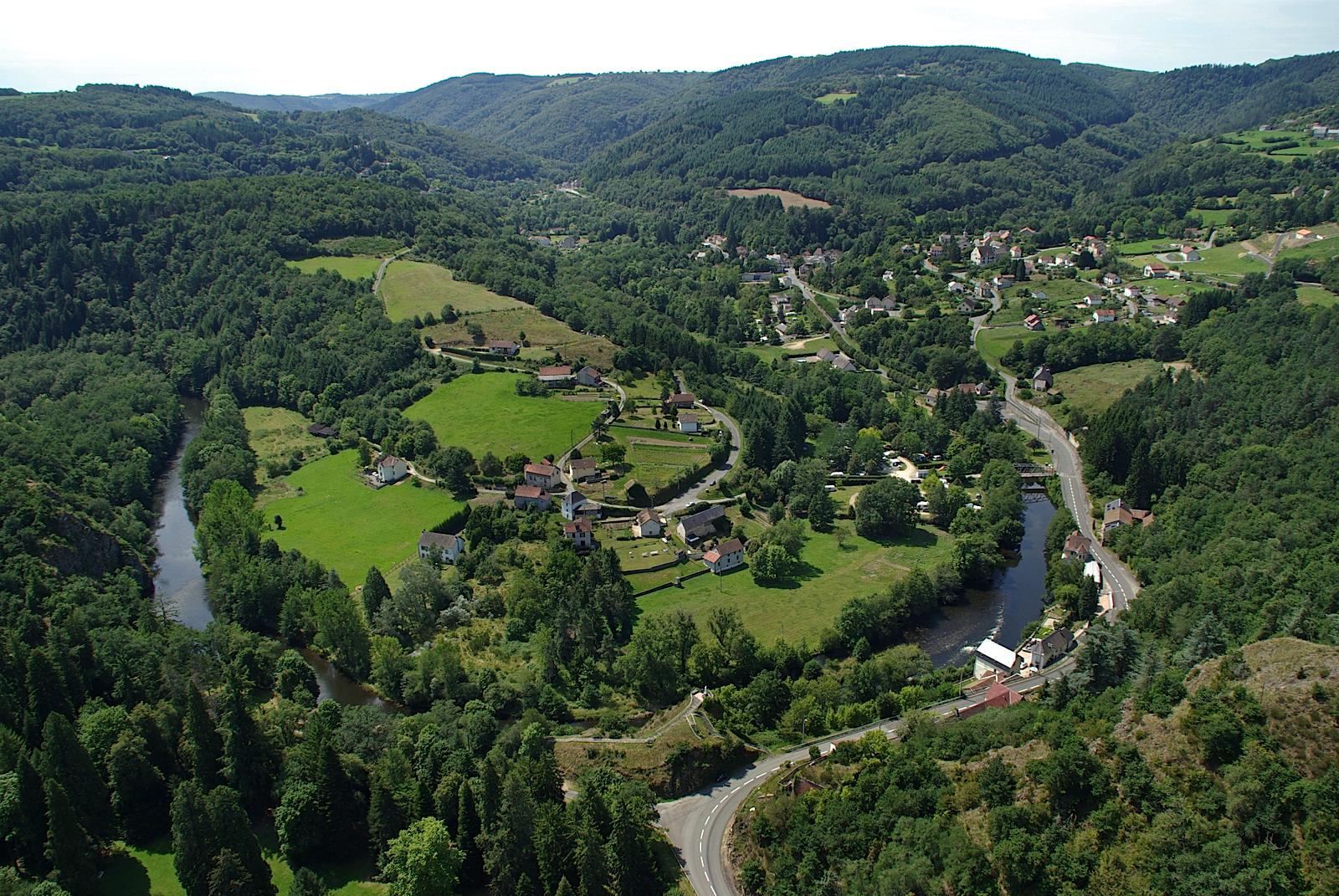
While thus living in Châteauneuf, the family received help from Alice Ferrières, a French mathematics teacher. She lived in Murat, a small remote city in the Cantal some 150 km further south. Alice Ferrières was a brave and selfless woman who abhorred the injustice against the Jewish people. From 1941 on Alice had tried to help Jews in any way she could, eventually rescuing around 50 adults and children. She kept full records of her potentially incriminating correspondence and a diary. These have been published in 2010.4 Miraculously, Alice was never arrested. According to a friend of hers, this was because the two local policemen’s daughters were among her pupils. If she had been imprisoned, who would have taught their children?
Alice had written to the GTE camp committee at Châteauneuf, offering help for the refugees. And so it happens that the Hakkert family was put in her care.
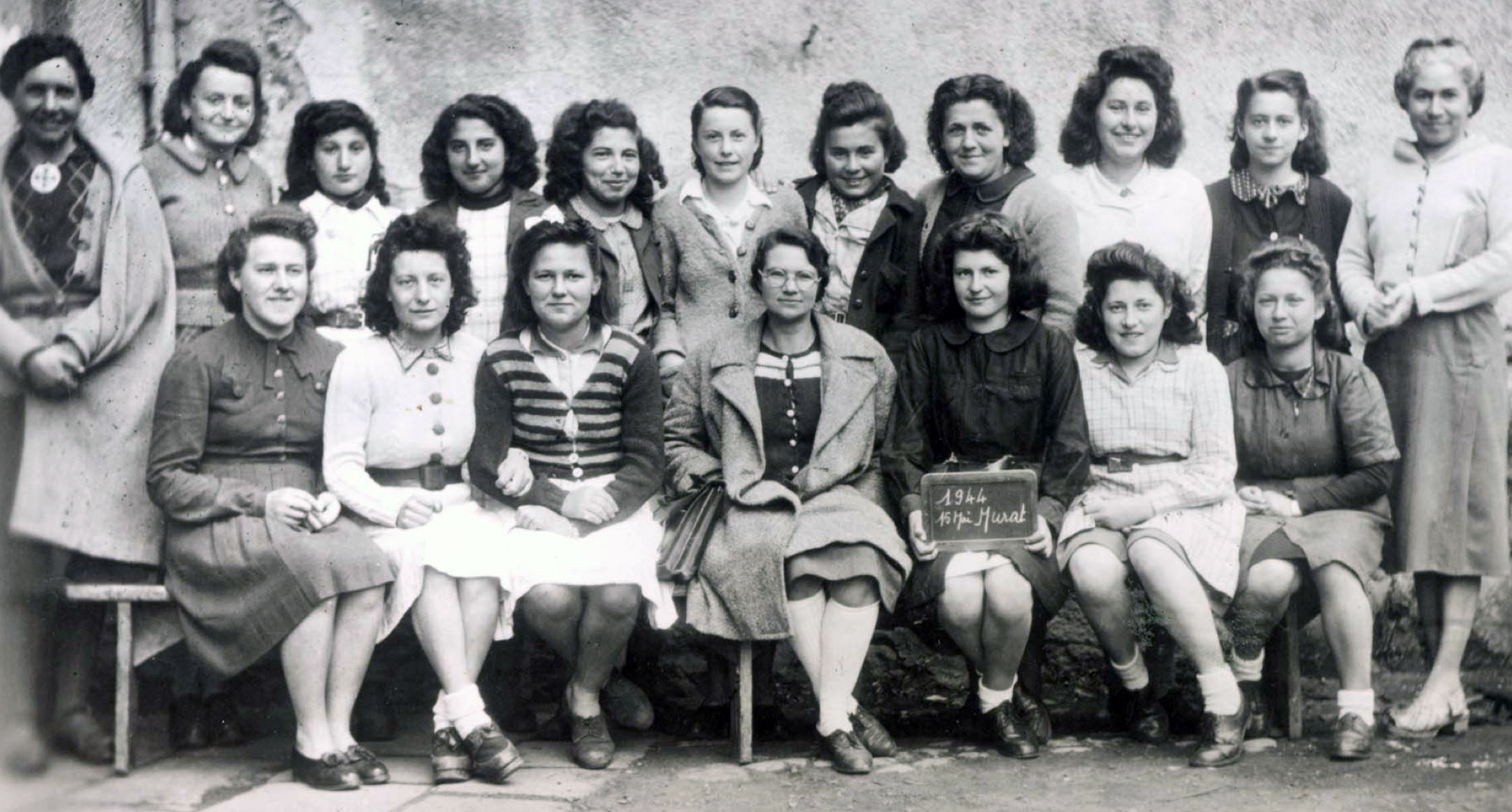
The Hakkerts had suffered malnutrition in the camps, and Alice started to send them food parcels. Max and Broer asked her in a letter for help in finding a job, as they were penniless. They were prepared to accept any work. But then, on the last day of February, disaster stroke again. Max, Flip and Broer were arrested, during the round-up demanded by the Germans in retaliation for a Parisian attack which had claimed the lives of two German officers. This operation aimed at the deportation of 2.000 Jews from former Vichy France. Our three men, together with all the men from the Châteauneuf GTE, were transported to the Camp de Gurs. A few days later they were sent overnight to Drancy, the infamous transit camp outside Paris, together with 770 other hébergés (or ‘guests’, a cynical euphemism used by the camp commander).
On the 6th of March 1943, Broer, Flip and Max wrote their last postcard to Flora and Ans:
Stay strong, many kisses,
Broer
Do not give up,
Flip
“I think this is absolutely the last card you’ll get from us for now. We write it in the train that’ll take us to our destination, direction Metz – further eastwards? At the moment, we are together with all the Dutchmen. […] The mood so far is wonderful and we make the best of it. Flip and Dries are also well. So far we have something to eat. But understand that we long for you! We hope to see you back soon and we keep our heads cool! We promise you that we will take good care of our own. If you just do the same, it will reassure us.” […]
Max
Max, Flip and Broer had been loaded from Drancy onto cattle cars and were deported to an extermination camp in occupied Poland. Three days later, on the 9th of March 1943, they were murdered in Sobibor.5
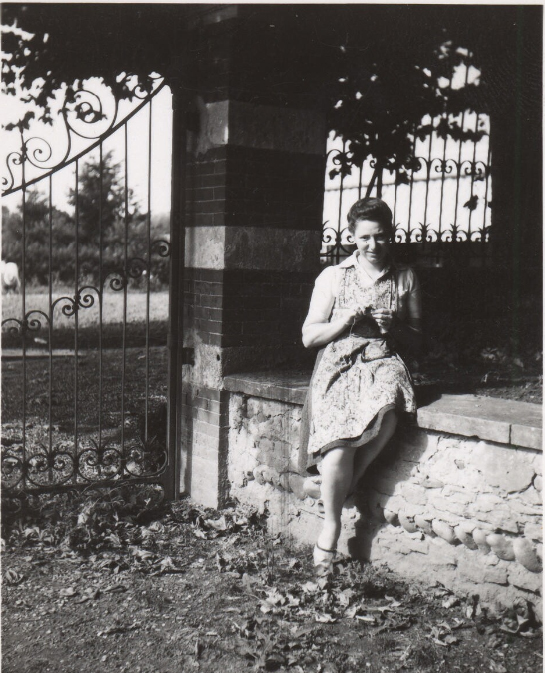
Alice Ferrières’ apartment served as a temporary refuge for several Jews until she could arrange permanent shelter for them in a nearby village. Ans was now terrified of being deported also, and begged Alice for help. She even pointed out how she and her mother could be saved: they needed a document attesting that they had been offered a place in Murat where they could live and work. Alice immediately did the necessary. Ans was offered work as a maidservant by the parents of one of Alice’s pupils and Flora could start to help in a Café. Eight days later, on March 22, they arrived by train in Murat, with their spare possessions folded in blankets. The job for Ans proved steady, but her mother Flora was not so lucky, she had to switch jobs often. According to Alice, Flora seemed lost amidst the mountains, she was highly strung and lived in continuous fear. The two Hakkert women were invited every Sunday afternoon by Alice for le goûter. There they could have a decent meal, meet other refugees, sing, play the piano and find some comfort.
At a certain moment Ans realised that the only safe place was across the border in Switzerland. So at the beginning of August 1943 they moved to a ‘secret’ place near Lyon where they were helped by the consul of the Netherlands.6 They had to stay for some months with a family working in the kitchen and making clothes before they were guided to Switzerland where they arrived in January 1944.
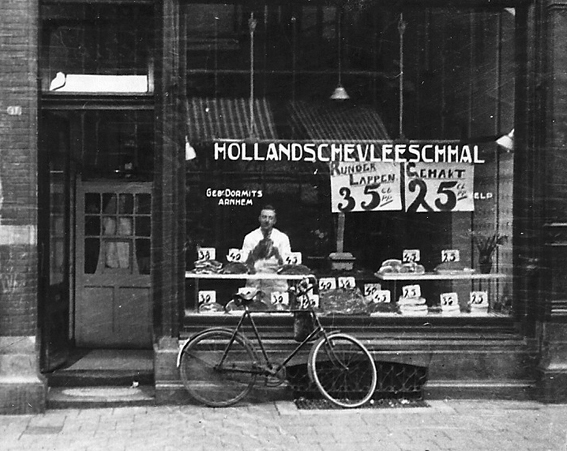
We now travel back in time to continue our story. In July 1942, around the same time as the Hakkert family fled, Adolf or Dolf Menco also left his home in Arnhem trying to reach Switzerland. Adolf Menco, a Dutch Jewish butcher, was then 38 years old. In the middle of summer he wore an overcoat and two shirts and removed his yellow Star of David badge. He illegally crossed the Belgian border, together with two friends and helped by a passeur. It rained cats and dogs as they crossed fields and meadows but Dolf still found time to appreciate species of cattle, from a butcher’s point of view. The three friends passed their first night in a haystack and in the morning ate a loaf of bread with a peppermint as desert. So began their risky journey through enemy-occupied Europe during which they had to rely on strangers and good fortune. Though a couple of people took advantage of their situation, in his diary Dolf praises more than once the selfless kindness of utter strangers. The three were lucky, and after almost four weeks they reached Switzerland. Two of them were promptly arrested crossing the border. Dolf had to spend a few days of jail time in Geneva. Later he got interned in a refugee camp near Bern. At that moment his diary ends, apart from one undated (anyway not before 1944) entry: “And then I met Anneke and the fairy tale in the mountains began.”

I didn’t find out when Ans finally heard about the tragical death of her fiancé Dries, and that of her brother and father. But she must have found some consolation in the company of Adolf Menco whom she met in a Swiss refugee camp.7 They were married in 1945.
After the war Ans went to live in Arnhem where her husband Adolf returned to start as a butcher again. Ans survived her husband Dolf by almost 30 years and lived to be 93 years old. She hardly ever wanted to discuss the war with her children.
Flora returned to Rotterdam where she rebuilt the Hakkert business, together with her nephew, David (Dé) Sanders. Mostly under David’s guidance it continued to exist until 2007. Flora passed away in 1980, aged 88.

Max’s brother Jacques was murdered in Auschwitz in May 1944.
Alice Ferrières visited Ans and Flora in 1947 in Holland. In 1964 Yad Vashem honoured her, as the first French woman, with the title ‘Righteous among the Nations‘.

Beste Frank en Divine, weer een prachtige documentatie uit de geschiedenis van de Nederlandse Joden opgeslagen. Heel erg bedankt voor dit moois !
A heartbreaking story, wonderfully told and wonderfully illustrated in music and pictures. What a service you both are doing: to history and to the memory of the people whose lives are recorded here.! Your work will be consulted and appreciated by future generations, I am sure.
Attached, just as a footnote, is a photo of a cousin by marriage, Elsi (Elsbetha) Herschkowitsch Danziger, and her daughter Evelijn, seen in 1934. They were living in Scheveningen when they, along with Elsi’s husband Hans Danziger and son Harry, were deported to Auschwitz by way of Westerbork. Evelijn was eight when she was murdered, Harry was five.
Thank you Peter, also for sharing this touching picture of Elsie from your archives.
A few minor additions, the above-mentioned Max Tailleur coincidentally shared the hotel-camp in Vevey Switzerland with Ido’s and my parents. Also, a commemorative plaque in Rotterdam’s Sparta Stadium lists Max Hakkert as one of the Club Members perished in Word War 2 (acknowledgement Mr. Albert Rottier).
nous aussi, ma famille et mes cousins de Trieste, après avoir passé la frontière avec des passeurs par le lac Majeur en décembre 43, nous avons trouvé refuge en Suisse à Vevey et Montreux où mon plus jeune frère, Lionello, est né en Février 45
très intéressant merci
Adriana Stock , Paris
Wat een prachtig en schrijnend verhaal over de familie Hakkert.
Het zal veel tijd en doorzettingsvermogen hebben gekost om dit materiaal bij elkaar te brengen.
Ik heb genoten van de uitvoering van Max Tailleur. Het liedje was mij onbekend.
Wat een groot en gevoelig artiest was deze man, dat is te horen aan zijn interpretatie.
v.g. Lothar van der Sluijs/ Den Haag
The Dutch “consul” in Lyon (mentioned in the story) was Sally Noach, a trader in carpets with incredible boast, and acting- and improvisation talents. Finally Sally himself escaped to Britain and returned to Holland after the war where he died in 1980.
Thank you for bringing up Sally Noach. Ans Hakkert did mention him after the war (but it is not clear at what time the Hakkert family had contact with him). And we discussed indeed the possibility that it was Sally Noach who helped Flora and Ans to cross the border to Switzerland. But in November 1942, Sally Noach had already fled from France while Flora and Ans Hakkert did not arrive in Lyon before August 1943.
In 1941 the Dutch consulate in Lyon had lost its official status and became the ‘Office Néerlandais‘. Maurice Jacquet, who had been honorary vice-consul of the Dutch consulate before the war became the director of the Office Néerlandais. There, Sally Noach worked together with him helping lots of people until Sally had to flee the country. The Office Néerlandais had then just been replaced by the ‘Bureau d’Administration’ for which Maurice Jacquet would work as ‘Assistant Social’.
We have no sources to corroborate that it was in fact Maurice Jacquet who helped Flora and Ans. But he still worked as ‘Assistant Social’ when the Germans arrested him in February 1944 by which time Flora and Ans already had reached Switzerland.
That’s why in the story we tentatively mention Maurice Jacquet.
After the war Maurice Jacquet became honorary consul of the Dutch consulate.
(source: Nationaal Archief Nederland)
Lieve Bert,
Wat een indrukwekkend en prachtig geillustreerd document over jouw familie.
Het wiegeliedje kende ik, de geweldige foto’s van je moeder op jonge leeftijd nog niet.
Heel veel dank voor dit bijzondere matriaal
liefs
Marcelle
Dag Bert. Wat een geschiedenis!
Ik ben muzikant, heb in de jaren 80 en 90 mijn instrumenten bij Hakkert gekocht. Nooit enige aanwijzingen gezien waaruit bleek dat Hakkert deze Joodse achtergrond had. Ik ben bijzonder verrast!
Ik schrijf momenteel de grschiedenis van mijn Joodse familie: De Gele Accordeon. Jazeker: veel paralellen! Door je goed geschreven en beknopte verhaal raak ik geinspireerd om (de samenvatting van) mijn verhaal snel af te ronden. Tzt zal ik het je sturen.
Groet. Luc van Gessel.
Beste Luc, dank voor deze bijzondere reactie. Echter een belangrijke correctie, het verhaal is geschreven door de redactie van http://www.imagesmusicales.be/about/8/ en niet door mij. Ook voor mij en mijn broer Ido was het een heel bijzondere verrassing, en eer, dat de redacteuren van deze site dit speciale verhaal over onze ouders en grootouders schreven.
(With many thanks, this supplementary note was mostly compiled by the authors of this blog resulting from a visa that we found in our family archives (attached). I took care of the translation and provided the document).
The Dutch consulate in Lyon was closed at the beginning of the war and replaced by the Offices Anglais (located in the old consulate) where Maurice Jacquet was Honorary Dutch Consul with Sally Noach as self-appointed attaché/diplomat and where they both worked. However, all official business for the Dutch (such as visas) was arranged by the Swedish delegation. In October 1942, the Vichy French took over. The consular services were entrusted to a “bureau d’administration” headed by a French director. Thus, the Offices Anglais were basically taken over by these French agencies while the old directors of the “Offices Anglais” could continue to operate as “Conseiller à titre privé” (private advisers). Thus, Jacquet could continue to work in this manner in Lyon. The entire organization of the offices had to be financed by the Dutch government in London. On November 11, 1942 Sally Noach fled to England. The attached visa is dated September 10, 1942. It is very likely that he had helped to obtain the attached visa for the Hakkerts through the Swedes and that is where there is the connection with him??? A survivor’s story where the flight did succeed seems to confirm this supposition (Manfred Wolf: http://tinyurl.com/jvd8clv, pp. 22 and 23).
Unfortunately, the Hakkert visa was issued in September 1942, just two months before the Germans occupied Vichy France which seriously complicated a potential escape route through the Pyrenees to Spain (and from there to the Dutch West Indies). Moreover, an additional visa was needed, a “visa de sortie”, to get out of France, and we are not sure if that visa was obtained as well (also for this, see the Manfred Wolf reference above).
Op zoek naar (nog meer) materiaal over mijn vader Sally Noach kwam ik in dit mooie document terecht. Er is enig misverstand over het moment dat hijzelf Frankrijk moest ontvluchten. Hij verliet Lyon op 17 september 1942 en kwam – via Madrid – op 22 september in Lissabon aan. De verwarring is door mijn vader geschapen, blijkbaar liet zijn geheugen hem op dat punt zoveel jaar na de oorlog in de steek. Er wordt op dit moment gewerkt aan een docu over zijn tijd en werkzaamheden in Lyon, wie mij verder kan helpen…….graag